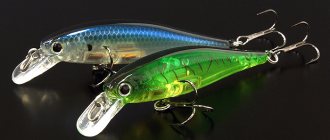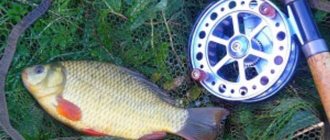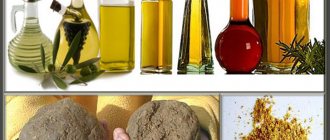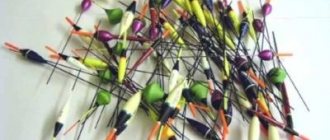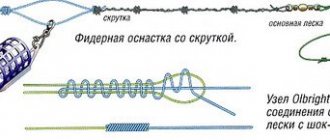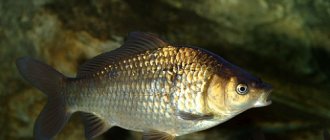Flavors for crucian carp
Depending on the habits and behavior of underwater inhabitants, the characteristics of their complementary feeding are formed. For example, crucian carp is distinguished by its curiosity.
Fishermen have long claimed that it actively reacts to almost all aromas, even those that it did not know before. But most of all, crucian carp loves sharp and unusual smells.
On any lake, with the help of such unusual complementary foods, you can attract almost all crucian carp. In ancient times, to do this, they used bricks soaked in various herbs, kerosene or other harsh compounds.
After which the brick was lowered into the water several days before the intended fishing for crucian carp. During this time, curious fish, attracted by the unfamiliar aroma, begin to circle around the source of the smell. This is the whole principle of using aromatic fertilizers for crucian carp.
But despite this, he can be quite picky about scents. And it can be extremely difficult to choose the necessary mixture for complementary feeding.
Many fishing enthusiasts think that flavors can be used in fishing as the main bait. But here they are extremely mistaken.
Since the essence of flavorings is to stimulate the appetite of fish, which can increase the number of fish caught significantly.
Crucian carp and smells
Crucian carp are sensitive to odors and experienced fishermen know that high-quality bait should have an aroma that most attracts fish in these conditions. Crucian carp will flock to exotic smells even from afar, but in this matter it is important not to overdo it and take into account many factors, because too strong a smell can scare away prey.
Theoretically, the mechanism of action of bait with a correctly selected aroma is very simple: crucian carp, attracted by the smell, will hover in the selected area until it falls on the fisherman’s hook, but in practice it can be very problematic to guess which aroma the fish will prefer this time.
To avoid this problem, you can prepare bait with different smells, but it is important to note that in no case should it saturate the fish!
As a rule, the most universal smells are garlic, corn, plum and potato.
What are fishing flavors?
Flavorings for crucian carp fishing are a huge range of substances, which are divided into:
- Aromatic substances for the nozzle;
- Aromatic substances for complementary feeding.
All these components are used as spices. Baits and complementary foods using flavorings are much more effective in attracting and seducing crucian carp, because when searching for food, it relies mainly on the sense of smell.
Flavorings differ from attractants in the following two factors:
- Attractants tempt fish to a lesser extent;
- Attractants do not stimulate the appetite of crucian carp, so you should not expect frequent bites.
Therefore, the fisherman should not confuse these two terms.
Flavorings and activators also differ from each other. Activators attract fish only at the beginning of fishing, while flavors act on them for a long time.
What smells does crucian carp like?
The harmful and shy crucian carp has smells that it loves most:
- A bite activator is a bait with pheromones (smell) that fish really love. Nothing artificial, all natural ingredients.
- vanilla. The smells of vanilla are most attractive to small and medium-sized crucian carp. But don't be surprised
if together with this fish you pull out a bream, which loves vanilla no less than its brother. - Anise. It will be enough to add a few drops of anise oil to bread or semolina so that the crucian carp smells this smell. In winter, experts recommend either not using anise at all, or adding very little to the mixture.
- Garlic. Larger individuals most often react to garlic.
- Honey. Sometimes there are periods when crucian carp really want something sweet. Therefore, it is best to use natural honey. It can be mixed with semolina.
- Hemp. If the bite is very sluggish, then it will be effective to use hemp as bait.
- Dill. It is considered one of the best flavors for catching crucian carp, which hides in heavily overgrown reservoirs.
- Potato chips. These flavors are mainly used by carp, but small crucian carp are also often caught.
- Oat cookies. In order for such cookies to have better stickiness and attract crucian carp, a little flour should be added to it.
How to choose the best and effective flavoring?
There are several types of aromatic additives:
- Liquid,
- Powdery.
Both of these types of additives can be found in specialty fishing stores. When preparing bait, it is worth knowing that aromatic ingredients should be approximately 7% of the total mass.
For each season of hunting for crucian carp, there is a special aromatic additive. So, for example, in summer the fish will not bite if a flavoring agent was used for autumn fishing.
The range of aromas is very diverse - from sickly sweet to extremely sour. Liquid types of additives are usually used together with bait.
When immersed in water, the flavor spreads throughout the area and lures fish.
They are used in small doses, so one purchased bottle will last for a long time. Powdered activators are usually used with bait.
Advantages of powdered aromatic additives:
- The aroma lasts for quite a long time;
- The powder supplement is easy to use;
- When in water, the additive immediately begins to act;
- Can be used in places with fast currents;
- Can be stored for a long time.
Flavorings for warm and cold water
Oddly enough, the flavoring of baits for these conditions is completely different.
At lower water temperatures, fish do not need pronounced aromas, unlike warm water. In warm water, fish prefer fruity smells and are quite bright. Despite this, you should not resort to their excess, which can negatively affect the entire fishing process.
Honey is ideal for warm water. In the summer, there is no point in supplying nutrients to the crucian carp, since there are quite enough of them in the reservoir itself.
In the spring, when the water has not yet warmed up, and in the fall, when it has already cooled down, nutrients should be introduced into the bait. Additives with the smell of bloodworms or worms can be used as flavoring agents. If the bait contains a worm or bloodworms, then it is better to avoid aromatization.
In cold water it is better to use natural flavors, as fish react very sensitively to them. Despite the fact that they do not emit a strong aroma, they attract fish effectively.
Fishing for crucian carp (flavors)
What scents attract fish?
This curious fish is most attracted to:
- Smells of vanilla. Small and medium-sized individuals react especially to vanilla. But besides crucian carp, vanilla also attracts bream, so you can safely hunt for that too.
- Anise oil. Experienced fishermen claim that if you add just a few drops of this oil to porridge or bread, the crucian carp will already be tempted. In winter, you don’t need to use it at all.
- Smells of garlic. Large crucian carp are caught more often if this additive is used.
- Honey. Crucian carp also loves to eat sweets. A few drops of honey are added to the porridge.
- If fishing is boring and sluggish, then hemp can come to the rescue.
- Dill is considered one of the most effective aromatic additives. Its aroma can attract fish even from overgrown areas of the lake.
- Oats. Oatmeal cookies perfectly attract the attention of crucian carp if you add some flour to them.
Bait for crucian carp
Photo by the author
Crucian carp is considered a truly amazing fish. Many fishermen who in childhood successfully caught crucian carp with an ordinary fishing rod without any bait are now experiencing enormous difficulties in catching this fish.
It is almost impossible to predict the moment when the active bite will begin - the weather seems to be good, the pressure has not been fluctuating for days, the light southern breeze is pleasantly invigorating - everything points to an excellent bite. But it was not there! The fisherman leaves the reservoir without a sip of salt, without having figured out the cunning crucian carp. And in a strong northeast wind, when the sky is covered with gray dull clouds and the rain “charges” for a long time, when you don’t want to leave the house, you can get into such a feast of fish that you remember this fishing for many years.
The mysteries of the unpredictable crucian carp have baffled more than a dozen fishermen. However, if you approach fishing wisely, having in your arsenal the largest possible range of attachments and lures, as well as competent bait aimed specifically at crucian carp, the chances of leaving the reservoir with a good catch increase noticeably.
Before starting a conversation about bait for crucian carp, you should touch on such a topic as the curiosity of crucian carp. He reacts very well to various stimuli that he has never encountered before. A striking example is sharp, unnatural odors. In many reservoirs, a non-standard aroma attracts crucian carp from literally the entire reservoir to the source of the smell. I think many people are familiar with the method of attaching crucian carp, described by Sabaneev, when a brick is impregnated with various pungent odors (from herbal infusions to kerosene) and lowered into the fishing spot a few days before fishing. A sharp, unusual smell attracts crucian carp and makes it circle around the source. It is for this reason that many commercially produced crucian carp baits have non-standard aromas - garlic, fish oil, plum, shrimp... When making bait and bait for catching crucian carp, special attention should be paid to these points. It happens that only one scent is able to attract the attention of crucian carp, but it simply does not react to others.
When choosing bait for catching crucian carp, one fundamentally important point should be taken into account - the nature of the reservoir. All of them can be divided into two categories. The first includes those in which crucian carp is the dominant fish. Such reservoirs, as a rule, are shallow and abundantly overgrown with grass. Here the crucian carp is the master of the situation and reacts well to various fine dusty baits, which begin to work vigorously immediately after they find themselves in the water. Actively rising and deliciously smelling particles perfectly attract crucian carp from a long distance. In order to keep the fish on the spot, you should add a large fraction to the bait. All kinds of grains, legumes and cereals (millet, peas, corn, pearl barley), as well as animal supplements (bloodworm, maggots, chopped worms) are excellent for this purpose. It is believed that crucian carp has an extremely negative attitude towards supplementary feeding, so the bulk of the bait should be supplied immediately before the start of fishing, and supplemented in small portions when the bite worsens. In such reservoirs, crucian carp, as a rule, responds well to complementary feeding and is easily caught; it does not require any special refinements in feeding. However, for the most part, the size of the fish leaves much to be desired - here a three-hundred-gram fish, not to mention its larger counterparts, is considered a worthy trophy among fishermen.
A completely different situation develops in another category of reservoirs, in which, in addition to crucian carp, there is a large number of a wide variety of fish - roach, silver bream, bream... In such reservoirs, as a rule, there is a good population of large crucian carp weighing more than a kilogram, but they are caught on fishing gear only occasionally. The most active biting of crucian carp here is observed in early spring, before spawning, and also after it, in late April-May. The fish, hungry during the winter, come out to feed in warmed shallow waters, which are promising places for fishing. The use of dusty fine bait in such a situation is fraught with the fact that all kinds of small fish like roach, which “tear” any bait to shreds, come to the fishing point. Of course, there can be no talk of any purposeful catching of large crucian carp in such a situation.
For fishing in these conditions, you need a heavy, inert mixture, which will not attract the attention of small fish through its active work. In some cases, it would be useful to over-moisten the mixture - prepare it in such a way that it begins to work after some time. To give the bait additional stickiness, rolled oats flakes are added to it, which are an excellent binder. There is another option - the dry bait mixture is mixed with water with the addition of molasses or with sugar syrup. Such additives have a great effect on the overall mechanics of the mixture; bait begins to work only in the bottom layer and practically does not attract the attention of small fish.
As with bream fishing, in such reservoirs the use of large-sized bait for several days prior to fishing works well. Various grains and cereals perform well as a bait, and the use of industrial mixtures is not rational due to their relative high cost. In some cases (for example, the fishing site is sufficiently far from the shore), the bait should be rolled into clay balls, which are thrown into the fishing site. Using bait greatly increases the chance of a good catch.
In addition to the correct crucian carp bait, the choice of attachment and bait for fishing is important. A correctly selected bait is often the key that allows you to bite through the most cunning and cautious crucian carp. Therefore, in his arsenal, the fisherman should have as many baits and baits as possible - in addition to the traditional trio “worm-maggot-bloodworm”, you need to prepare canned corn, steamed pearl barley, semolina, bread, pancakes. Also, special attention should be paid to the aromatization of baits - an illustrative case from practice is when, after trying all kinds of baits and baits, we managed to find an approach to crucian carp. It consisted of using steamed pearl barley, treated with garlic and valerian. The crucian carp refused to bite on the other baits. In addition, the use of pearl barley, which smells different, also did not bring bites. Therefore, special attention should be paid to choosing the right nozzle and the right aromatics.
Alexey Murashko May 21, 2014 at 00:00
How to make your own flavoring at home?
Both an expert fisherman and a beginner can prepare the flavoring on their own.
To do this, it is worth considering factors such as:
- What is the current on the lake;
- Climatic conditions;
- Weather;
- There are so many fishermen around and many others.
Prepare flavorings for crucian carp from both plant and animal components.
The most common products for the manufacture of aromatic additives are:
- Worm. The dung rope ranks first in popularity. Because it is very easy to find. If you put it in a container with lemon balm or mint for a short time, it will attract large crucian carp and become much cleaner.
- Bread. This curious fish loves black bread with the addition of various flavorings, for example, pharmacy star. Its pungent odor is very effective on fish.
- Aromatic alcohol additive. To prepare it you need to have:
- Greenery;
- A few cloves of garlic;
- Anise oil;
- Dried cloves and cinnamon;
- Alcohol or vodka 40% - approximately 250 ml.
All this is mixed in a jar and infused for two to three weeks.
The advantages of this flavor are that it:
- It is stored for a long time;
- Easy to use;
- Excellent at attracting fish;
- Used in small quantities;
- It can be added to complementary foods, or to a bait.
- Porridge for complementary feeding. Consisting of:
- Ground sunflower seeds;
- Millets;
- Chopped worms;
- A few drops of peppermint oil and lavender;
- One tablespoon of lavender oil.
- Crucian carp also prefers complementary feeding, which is based on cake soaked in vegetable oil.
- Tea syrup. This syrup is also very popular among fishermen. To prepare it, tea bags with different flavors can be used.
- Corn. A very effective way to lure crucian carp is considered to be a flavor made from corn and sunflower oil.
- Honey. For a high-quality fish catch, honey diluted in water is also used. Once you add it to complementary foods, the “sweet tooth” crucian will immediately fall for the bait.
The main rule when preparing bait for crucian carp is to make the mixture as rich as possible. This will promote active fishing. But it is also important that the groundbait does not become tastier than the bait.
It is worth noting that crucian carp prefers plant-based aromatic additives rather than synthetic ones. Of the second, the only exception is kerosene.
During complementary feeding, it is imperative to use aromatic additives. The right bait is well-finely ground ingredients that perfectly attract crucian carp and awaken its appetite.
To make fishing effective and interesting, you should not use very light components for complementary feeding, as they can settle to the bottom, where small fish will “peck” all the time.
If the bait is prepared correctly, it will not break into pieces upon contact with water, but will remain in the feeder and will gradually disintegrate in the water, thereby luring crucian carp.
General rules for feeding crucian carp with added flavorings:
- First you need to carry out the first bait. If you catch small and medium-sized fish, then you need to throw 6-7 small crumbs of porridge. Next, after each caught individual, throw in feed of a smaller diameter. If you are hunting for large crucian carp, then throw in 10-12 balls of porridge with flavoring.
- Complementary food must be periodically moistened so that it does not stick to the palms.
- It is necessary to throw the bait in the same place. This place should be chosen close to the float with bait.
- If the bait gets into a place far from the main bait site, this may cause the fish to get scared and swim away.
Aromas of crucian carp bait
Flavors are different. They differ in smell, consistency, and can be:
- oil;
- syrupy;
- powdery;
- in the form of a spray;
It is known what smells crucian carp love most. Several groups can be distinguished here:
- Caramel-creamy. From this category, crucian carp like milky, chocolate, and cookie aroma;
- Walnut. Walnut, hazelnut, and peanut flavors will work great;
- Fruity. Pineapple, melon, strawberry, plum, raspberry scents;
- Spicy aromas such as anise, vanillin, garlic, pepper, dill, cinnamon.
We recommend reading: Dough for fishing for crucian carp
In addition to plant components, many fishermen add organic ingredients to the feed mixture for crucian carp. They are obtained from calf liver, insects, maggots, leeches, worms, and animal blood.
Let's look at some of the scents and look at them in more detail.
Anise
Bait with anise is traditional; fishermen use it to attract crucian carp. Literally a few drops of flavor added to bread crumb and semolina can effectively attract this fish. As a rule, the bait is prepared so that its composition (as a percentage) contains 2-5% anise of the total number of ingredients.
To prepare winter bait, it is better to use anise powder, for summer bait - an oil composition or anise tincture.
Vanilla
This smell also attracts crucian carp quite well. Its different variations work equally well: vanilla bean, vanillin, vanillin sugar. Many fishermen use sprays and drops with this scent. Vanilla is suitable for many baits: both animal and plant. When preparing the feed mixture and bait, it is enough to add thirty grams of vanillin sugar to one kilogram of the composition. Drops, as a rule, are applied to bait or bait directly on the pond.
Hemp
If you want to activate sluggish fish bites, add some fried or steamed hemp grains to the bait. The nozzle can be treated with an extract from this plant. A significant part of fishermen use hemp aroma as the main flavoring agent to activate crucian carp. It can also be mixed with other scents.
Honey
We all sometimes have a craving for something sweet, and crucian carp is no exception. Among sweets, fish prefer honey, and natural honey at that. It is added to semolina or pasta. In most cases, honey is used for fishing in warm water, but sometimes this product can be quite effective in the cold season. Shows good results in combination with other flavors.
We recommend reading: Bait for perch in winter
Garlic
The garlic smell works great when catching large crucian carp and in most reservoirs, since garlic automatically “removes” bites from small fish. The root vegetable can be added to almost any herbal composition. It is also a good idea to dip animal bait in the root crop juice, or treat it with a spray. Quite often this ingredient is combined with honey, vanilla, caramel and fruity scents. Seasoned dough for crucian carp fishing with garlic sometimes allows you to catch a real trophy. Especially if you fish at the end of the summer season.
Knowing these little fishing tricks, you will return home with your catch much more often. It is important to guess the weather and understand which flavor works best in a particular body of water.
What aromatic additives are used at different times of the year?
Before hunting for crucian carp, you must take into account the time of year and weather conditions. Why?
The fact is that in cloudy weather, crucian carp prefers more subtle odors, and in the summer heat it is better to use bright and rich flavors.
It is important to remember that if you use a large amount of additives, then instead of attracting fish, on the contrary, you can scare them away. In addition, you don’t need to feed crucian carp a lot and often in the summer, since it can already find a lot of food on its own.
But in the spring and autumn seasons, it is advisable to use bait that contains a large amount of nutrients. Since in the spring the fish prepares for spawning, and in the fall - for winter. You can add worm flavorings to complementary foods.
In winter frosts, crucian carp are especially sensitive to all kinds of aromas and odors. Therefore, it is advisable to avoid flavorings altogether. The only exception can be a protein supplement, which will not scare away the crucian carp, but, on the contrary, will be able to attract it.
Rules for aromatization in cold and warm water
In different weather, when the water temperature is different, you should adhere to some rules for using odors for successful catching of crucian carp:
- In winter, fish prefer mild aromas, and in summer they go for strong, pungent odors.
- In the off-season, when the fish are spawning in the spring, as well as in the fall, in preparation for cold weather, the fish actively bite on the smell of bloodworms and worms.
- During the cold season, it is recommended to use only alcohol tinctures.
- Combinations of several scents increase the chances of catching.
Crucian carp is a capricious fish, so there is no guarantee of a 100% catch. Regular experiments with smells, changing gear and reservoirs will allow you to get excellent results.
How to prepare flavors for winter and summer fishing yourself?
In the spring season
Crucian carp differs from other fish in one important factor - its sluggish appetite; it is rarely very hungry. Therefore, it is important not to overfeed the crucian carp, as it may not respond to the bait at all.
When hunting for crucian carp, one rule should be taken into account - the cooler the water temperature, the more willingly crucian carp eat food of animal origin.
And accordingly, the warmer the water temperature, the more desirable it is to eat bait of plant origin.
Therefore, in the cool season, it is advisable to add flavorings with the smell of worms, bloodworms, etc. to complementary foods.
One example of preparing complementary food for catching crucian carp:
- Dry millet - 400g;
- Bread crumbs – 400 g;
- Oatmeal – 200 g;
- Finely ground sunflower seeds
- Worm flavoring.
All ingredients are steamed with hot water and infused for 5-8 hours.
In the autumn season
The principle is the same as in the spring season - it is advisable to use a flavoring using animal elements.
During the summer season
In summer, flavorings of plant origin are most often used. This could be black bread and rolled oats.
Just soak it a little with water and add a couple of drops of vegetable oil. Barley steamed in boiling water with the addition of anise or vanilla also gives a good result.
During the winter season
Choosing a flavor for winter fishing is an art. Since during this period the crucian carp usually sleeps.
And if fishing takes place in places where crucian carp do not have the opportunity to sleep, then it is better either not to use the flavoring at all, or to add protein components in small quantities.
A few tips for high-quality and effective crucian carp hunting:
- In the cold season, aromatic additives of animal origin should be used;
- You can combine different flavors with each other;
- In summer and spring, it will be more effective to use sweet and bright scents;
- If you add aromatic additives to complementary foods, they will attract crucian carp faster;
- It is worth taking into account factors such as weather, lake current, water temperature and others.
Flavorings at home
Many fishermen like to make their own flavors. To do everything right, you need to remember and take into account the following points:
- the nature of the reservoir;
- weather;
- season;
- the number of neighboring fishermen and much more.
Dung worm is the most common household flavoring agent. It must be placed in a box containing mint for some time. So it becomes:
- clean;
- attractive to crucian carp.
Crucian carp also loves black bread, which can be mixed with other flavorings. Sometimes some anglers baffle others by telling them about personally invented flavors from the most incredible combinations.
The drug “Zvezdochka” is sold in pharmacies. For inexplicable reasons, it is very attractive to crucian carp.
Remember that the choice of flavor depends on weather conditions and is selected solely by trial and error. Never use just one scent, be sure to add several more to it.
Let's take a closer look at one of the flavoring recipes that is made at home. This will be an alcohol flavoring.
It can be easily dissolved in cold water and will quickly attract fish. Alcohol flavoring can be stored for a very long time. In addition, it requires very little to use. To prepare it you need the following ingredients:
- dill;
- garlic;
- anise;
- carnation;
- cinnamon;
- vodka 40% – 1 glass.
All ingredients must be mixed in a glass container and left to brew for three weeks . This flavoring is suitable both for preparing bait and for dipping bait into it before casting a fishing rod.
We will also consider another recipe that is popular: flavoring is tea syrup. To make it, you will need tea bags. They can come in scents such as:
- blueberry;
- honey;
- currant;
- cinnamon;
- apple.
If we talk about additional components , they are as follows:
- hemp oil;
- powdered milk;
- soy sauce;
- ketchup.
Six bags are placed in a container and filled with boiling water, to which you need to add a few tablespoons of sugar. The resulting syrup must be mixed with additional components. Leave for at least 30 minutes and strain. You need to soak the bait in this flavoring. To keep warm, you can use a thermos.
Terms of use
To get the maximum effect when fishing for crucian carp, you need to follow simple rules :
- remember that too strong odors repel crucian carp, so it is recommended to use fragrances carefully;
- during the cold season, only alcohol flavors are used;
- During the winter season, animal flavors such as worms, canned food or fish oil are suitable.
